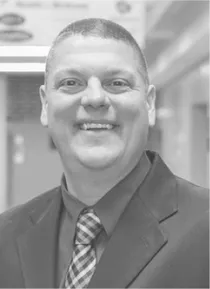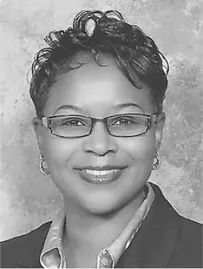![]()
1 Heroes in the Hallways
“A hero is no braver than an ordinary man, but he is brave five minutes longer.”
—Ralph Waldo Emerson
Ralph Waldo Emerson suggests a hero is no braver than any ordinary man or woman, it’s just that they are brave for “five minutes longer.” Who is your hero? Maybe it’s your parent, a teacher, spouse, child, or someone you know who overcame insurmountable odds. The best heroes are not the ones in comic books or movies leaping over tall buildings or flying into outer space. The best heroes are people that we see, know, and trust. The real people who do extraordinary things, or perhaps they do ordinary things in ways that consistently honor and serve others over time. Teachers who regularly give all they have for their students are heroes. School leaders will quickly stand and applaud teachers as heroes, but these same leaders are reluctant to call their own work heroic. We believe teachers, staff members, school leaders, and students can all be real heroes. Our hallways are filled with current and potential heroes!
We don’t need superpowers to be a kid’s hero! What we need is to be there for them. Kids need us to invest in them, come alongside them, and empower them. They need to know that we care for their well-being and future. School leaders often get sucked into a vortex of doubt and disbelief, fearing that they don’t have the ability and power to truly move a school forward and make a difference in the life of a kid. Just the opposite is true! Our schools and kids are going to be successful if we commit to being hero building leaders dedicated to preparing kids for their unknown future.
The best heroes are people who we see, know, and trust.
@DrBillZiegler @DrDaveRamage
We don’t see exemplary school leaders as heroes who are superhuman and therefore faultless, immune to pain and failure, or inaccessible to others. Just the opposite, they are highly relational, focused on servant leadership, resilient, fierce, relentless, and tireless advocates for kids. These advocates for kids and staff are the heroes who are making real, sustainable, and positive change for their schools. It’s leaders like this who we seek to empower, encourage, and inspire with this book so that they can continue the great work of hero building and leadership in their schools.
Hero-building leadership is dependent on collaborative leadership. It’s not about one leader driving the school forward but rather a collaborative focus of leaders committed to the mission of building heroes. Hero builders are leaders who understand that collaboration is key to success, the foundation of growth, and the heartbeat of progress for the work of creating hero students who will change the world. In Collaborative Leadership (2017), Peter DeWitt writes, “Collaborative leadership includes the purposeful actions we take as leaders to enhance the instruction of teachers, build deep relationships with all stakeholders, and deepen our learning together.” It’s this type of leadership that hero-building leadership strives to build on and nurture. Faculty, staff, students, parents, and other adults who engage in hero-building leadership nurture, develop, and build students who are the heroes for their community, region, and the world. Our students are the young heroes who will transform our world and serve to bring about positive change for generations. We passionately believe that if the schools don’t get things right, the world never will.
You Don’t Need Superpowers to Be a Kid’s Hero is written to inspire extraordinary school leaders who equip and empower their students and staff to do amazing things. This chapter will tell the stories of school leaders doing heroic things for students. These heroes in the hallways are daily making a difference in the lives of students and staff. They are working tirelessly to be advocates for kids, to innovate learning, to strengthen community partnerships, and to make the tough and courageous decisions to move their schools, learning, and students forward.
You Don’t Need Superpowers to Be a Kid’s Hero is written to inspire extraordinary school leaders who equip and empower their students and staff to do amazing things.
@DrBillZiegler @DrDaveRamage
These stories span the country and include elementary school, middle school, and high school from urban, rural, and suburban settings that include students as diverse as the communities represented. They feature leaders who are advocating for kids in a way that empowers and inspires. We hope you will enjoy reading the stories of these school leaders, be encouraged by their work, equipped by the strategies they’re using, and inspired to continue doing amazing things for your students, staff, and community.
All of these leaders would humbly say they are just showing up every day to do what’s best for kids. If you were to ask their students, parents, or staff, they would say they have a real hero in their school’s hallway. As you read their stories, it may remind you of a real hero who influenced you. Their leadership may be a significant factor in your calling to make a difference as a school leader yourself.
Principal Makes House Calls
Principal, Mr. Matthew Moyer—Rupert Elementary School, Pottstown, PA
Twitter: @MoyerMatthewD @PrincipalsofL
I’MPACT Program Makes House Calls
(385 students in preK through Grade 4: 74 percent economically disadvantaged; Demographics: 34.2 percent White, 33.4 percent African-American, 17.6 percent Hispanic, 12.6 percent multiracial, 1 percent Asian, 1 percent other)
Our first school leader sheds light on the importance of looking deep inside and seeing what students and staff bring to school by connecting with students and families in their lives beyond school. This leader values and understands the importance of understanding the invisible backpack and helping faculty and staff gain an understanding of the lives our students lead and how their lives affect the ways we learn and relate together. Learn more about the invisible backpack and looking deep in Chapter 2.
Imagine being an elementary school student at home watching your favorite cartoon or playing ball with your sister when a knock comes at the door. Your parents answer the door, and it’s your school principal and teachers. Principal Moyer and Rupert teachers visit students at their homes as part of their school district’s home visitation program called I’MPACT (I’M Pottstown Action Community Team).
Principal Moyer and his faculty/staff members wanted to recognize the kids in school who weren’t getting recognized for whatever reason.
“The team visited students from prekindergarten to fourth grade to congratulate them and their families and to acknowledge the students’ success during the first marking period. The program’s mission is to ‘celebrate learning.’ It develops positive communications between the school and families by building relationships with community members. The team makes door-to-door visits to surprise students and their families with certificates of achievement and I’MPACT winner shirts. Students are congratulated for their hard work, citizenship, and positive behavior.” The I’MPACT team consists of teachers, support staff, parents, and administrators from Rupert Elementary School.
Principal Moyer said, “This is a tremendous program that allows us to not only recognize positive behaviors in our students but gives our staff the opportunity to meet students and parents outside of the school building in an environment that is conducive to promoting positive relationships. As I look at these youngsters that we are recognizing, it reminds me that they are the reason we say ‘Proud to be from Pottstown.’” (Brandt, 2014)
Principal Moyer shared, “Each grade level selects one student. We try to select the children who don’t normally get recognized, like children who had a lot of improvement in some area. We strive to recognize the kids that always work hard and give their best.”
In a neighboring school district, a retired elementary principal would visit the homes of each kindergarten student to welcome them to the school, meet their parents, and read them a story from a book. Dr. Ron Christman served as the principal of Gilbertsville Elementary School in the Boyertown School District. He had close to 200 kindergarten students who he scheduled these home visits with. At the end of his visits, he would give the students the book. Even years later, there are students in the community who still have that children’s book on their bookshelves and an eternal memory of a principal who left an indelible mark on their young lives and the start of their education.
It’s principals like Matt Moyer and Ron Christman who are going the extra mile for their students, and they are advocating for kids through their actions. Principal Moyer and Christman understand the need to look deep inside the hearts and minds of kids to help them be successful in school. In Chapter 2, we dive deeper into how school leaders can do this and share how to support and help students who are experiencing trauma, how to connect and see all students in the school, and how to develop the hidden strengths of children. Plus, we will share how to nurture and build a culture of relationships, resources, interventions, and wisdom.
Manufacturing Our Future
Principal Darci Pollard
Twitter: @ACSCougars
Andrew Carnegie Elementary School
(631 Students: 82 percent economically disadvantaged; Demographics: 97.8 percent African-American, 1.4 percent Hispanic, and 0.8 percent other)
This courageous leader was not satisfied to perpetuate the belief that the information economy was beyond the reach of her female students. Her leadership created a space where students could not only gain skills for coding and computer science, but also where they cultivated attitudes and habits that reminded them to break through glass ceilings and barriers. The “Black Girls Code” club was a community of learners dedicated to learning resilience and building grit. We talk more about how hero-building leaders create these kinds of opportunities for their students in Chapter 6.
Principal Darci Pollard and her staff are committed to engaging students through the use of technology. They understand the power technology has to equip and empower students for the future. Their school is equipped with Chromebooks, but Darci and her team didn’t believe they were using them to their fullest potential. They were searching for ways to engage all students, especially their girls, in coding. Darci and her faculty believe that coding is the language of the future and that the students of Andrew Carnegie Elementary School need to know and understand the basics of coding.
In an effort to engage girls with coding, Principal Pollard and her faculty started a club called, “Black Girls Code.” This club became a huge hit with girls, and they signed up to learn coding in a fun and engaging way. The girls use Ozobots, which are small robots to teach coding and creativity. They also use Scratch coding, which is a programming language and online community where children can code and program through the power of stories, games, and animation. Scratch builds creativity, collaboration, and systems thinking through a fun and interactive digital tool for students.
Now, the Black Girls Code club is hosting a family STEM (science, technology, engineering, and mathematics) night for families to learn what the girls and school are doing around STEM and technology. Students of the Black Girls Code club searched out funding for the event and worked to plan the STEM night for parents.
Black Girls Code is an organization based out of San Francisco that has the mission to increase the number of women of color in the digital space by empowering girls of color ages seven to seventeen to become innovators in STEM fields, leaders in their communities, and builders of their futures through exposure to computer science and technology.
Principal Pollard partnered with the University of Chicago, UChicago STEM Education Program, to build the Black Girls Code club. By doing this, she was able to get university volunteers and students to help out, had access to university technology, and it provided the girls with role models who were coding as col...


